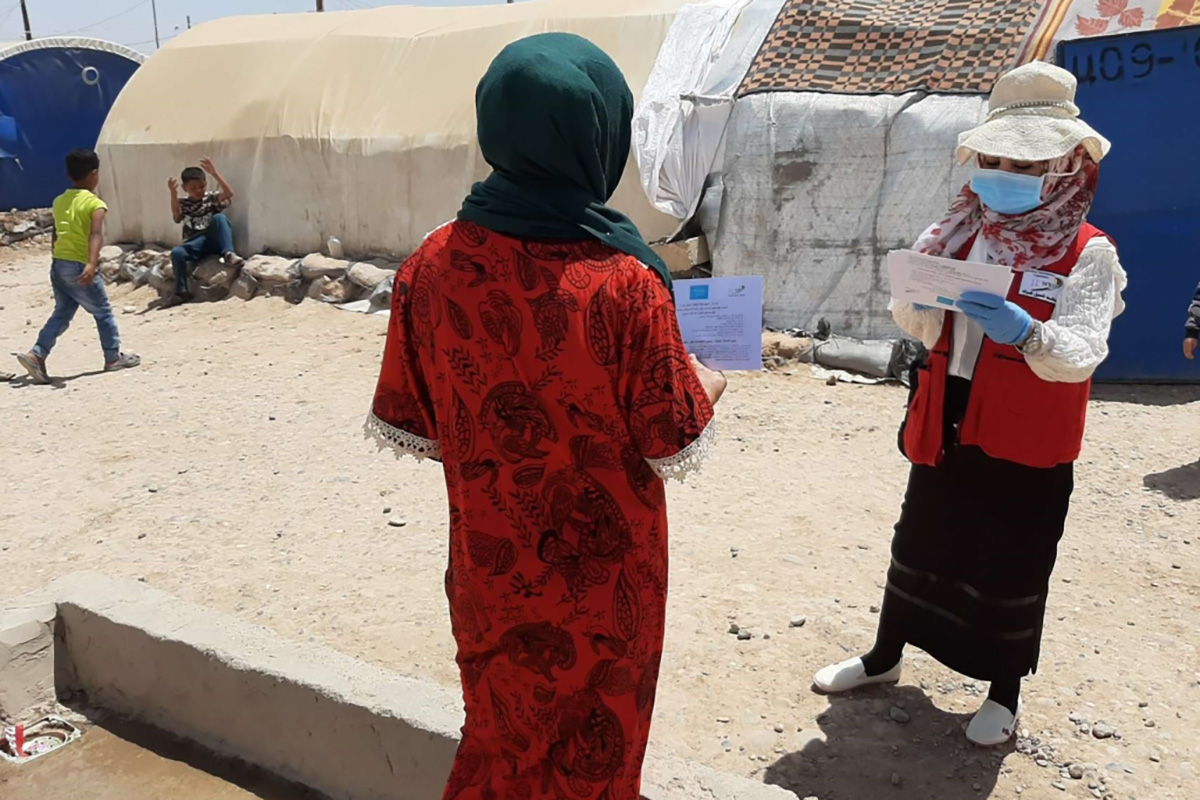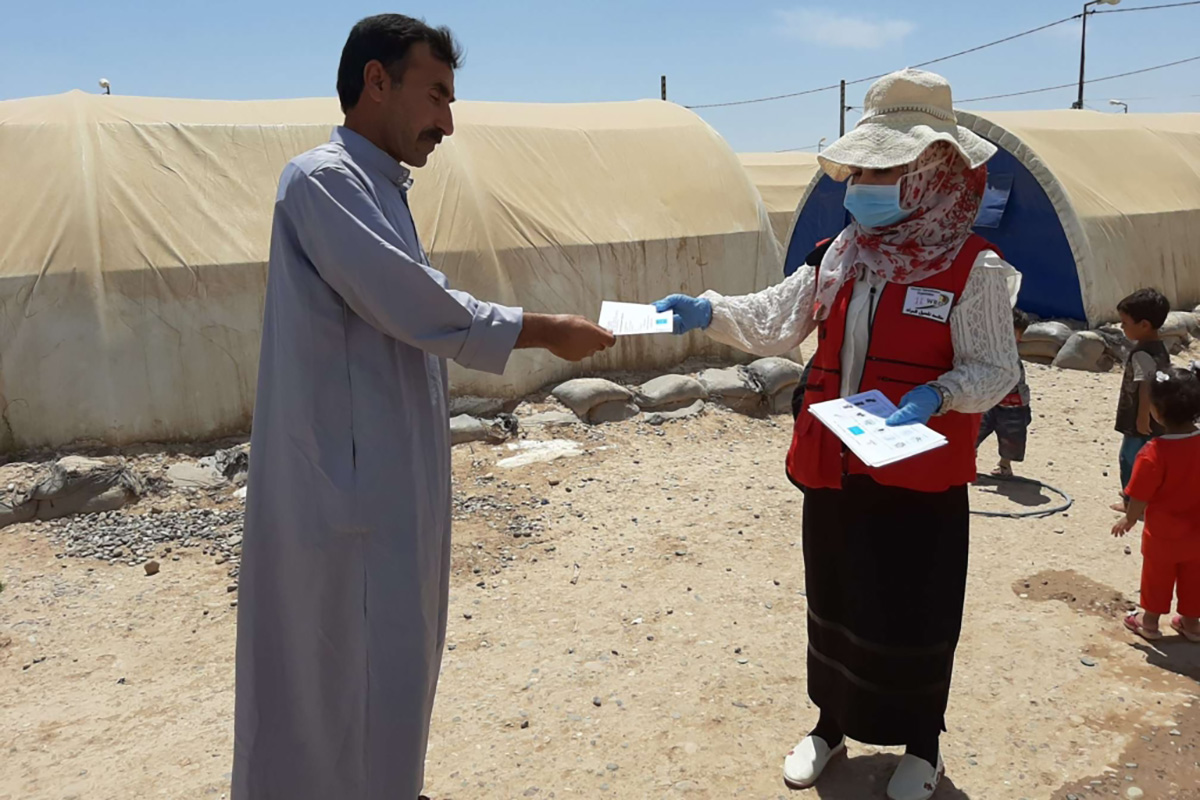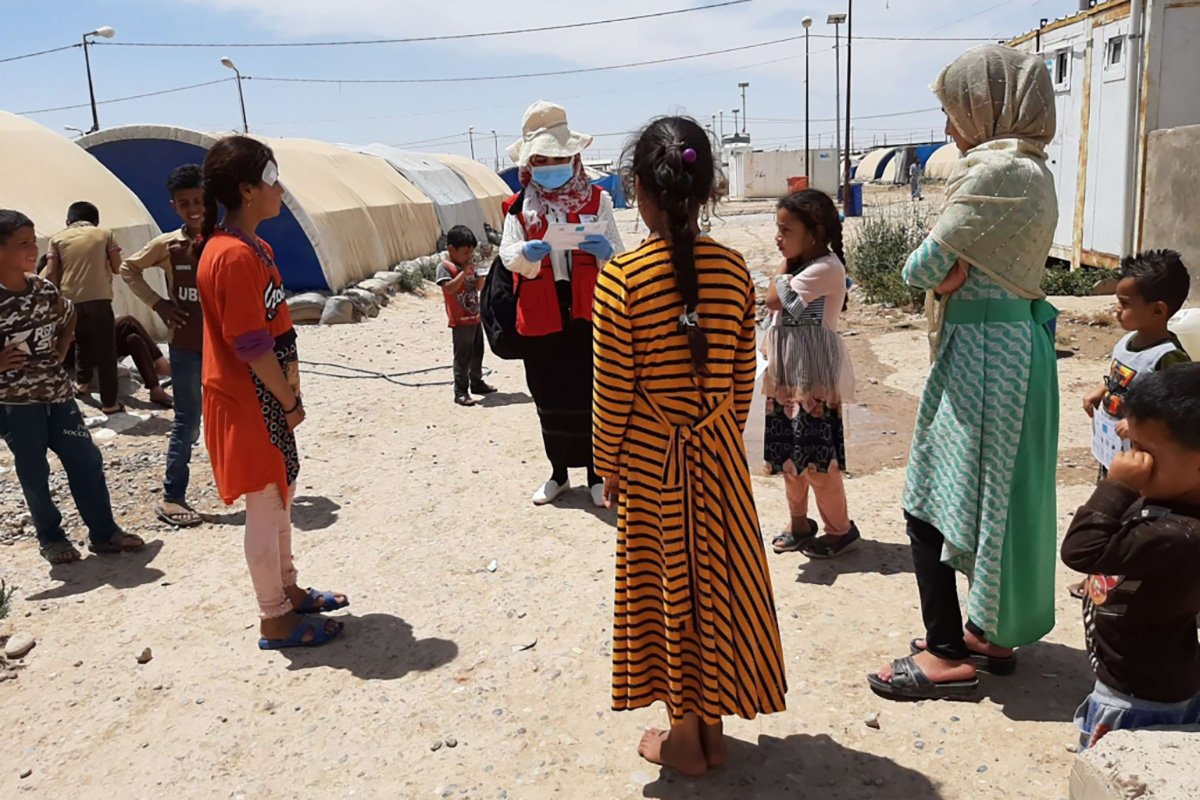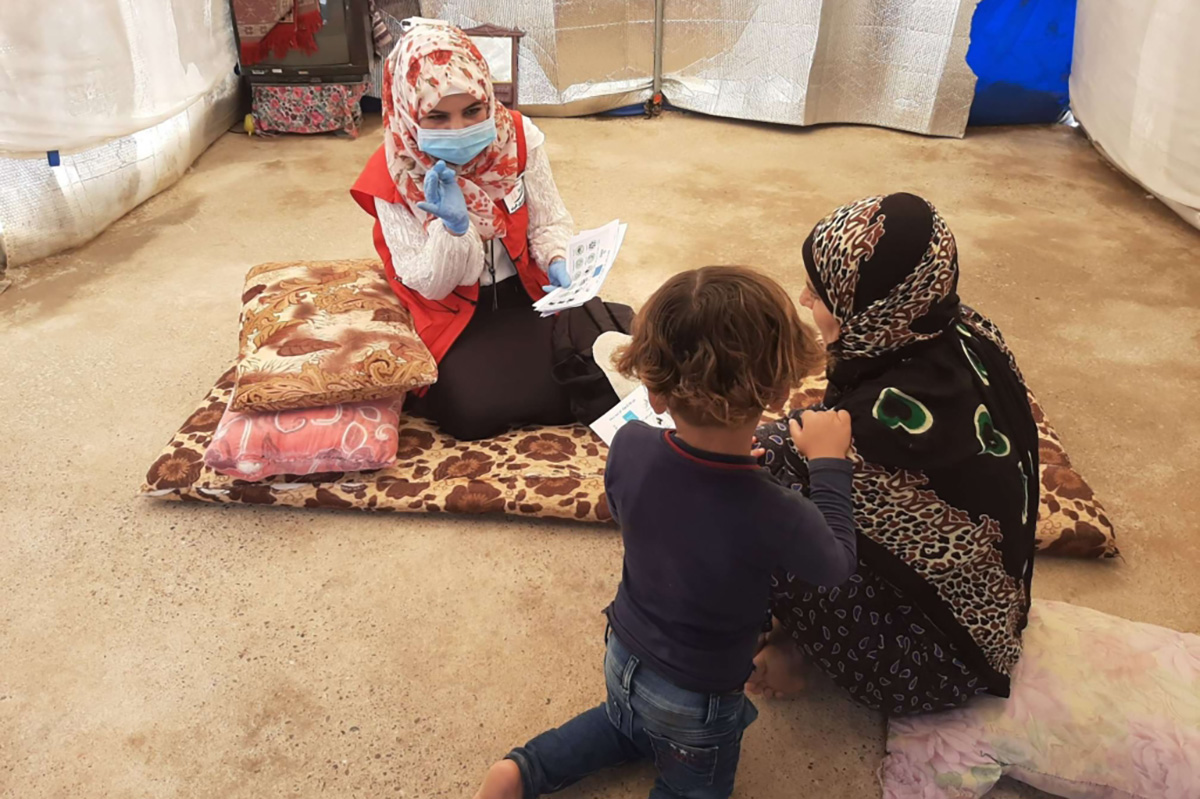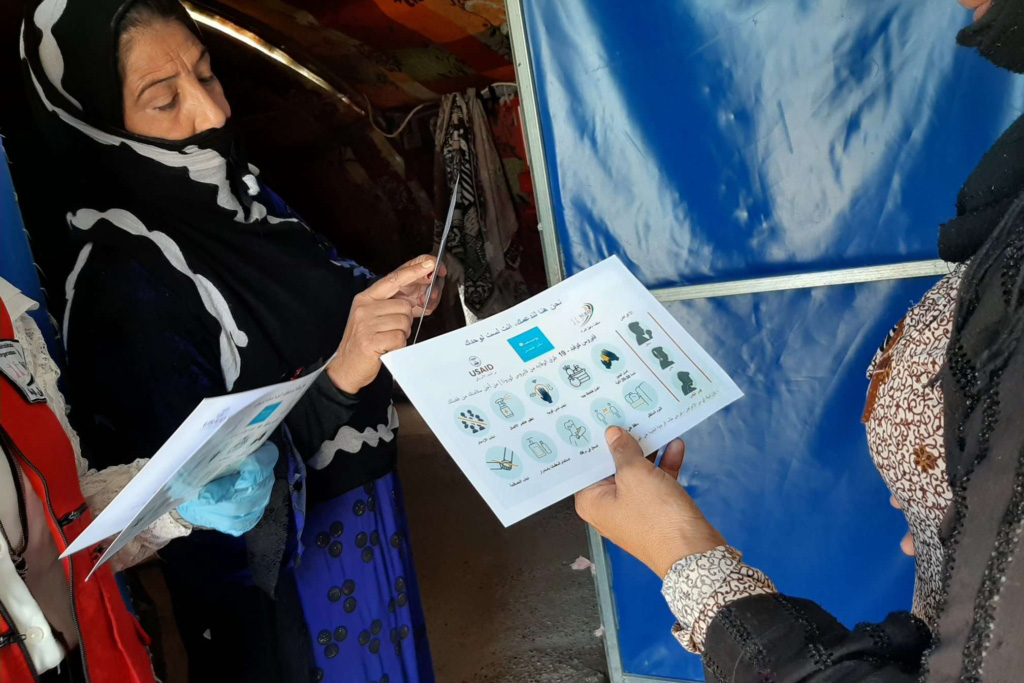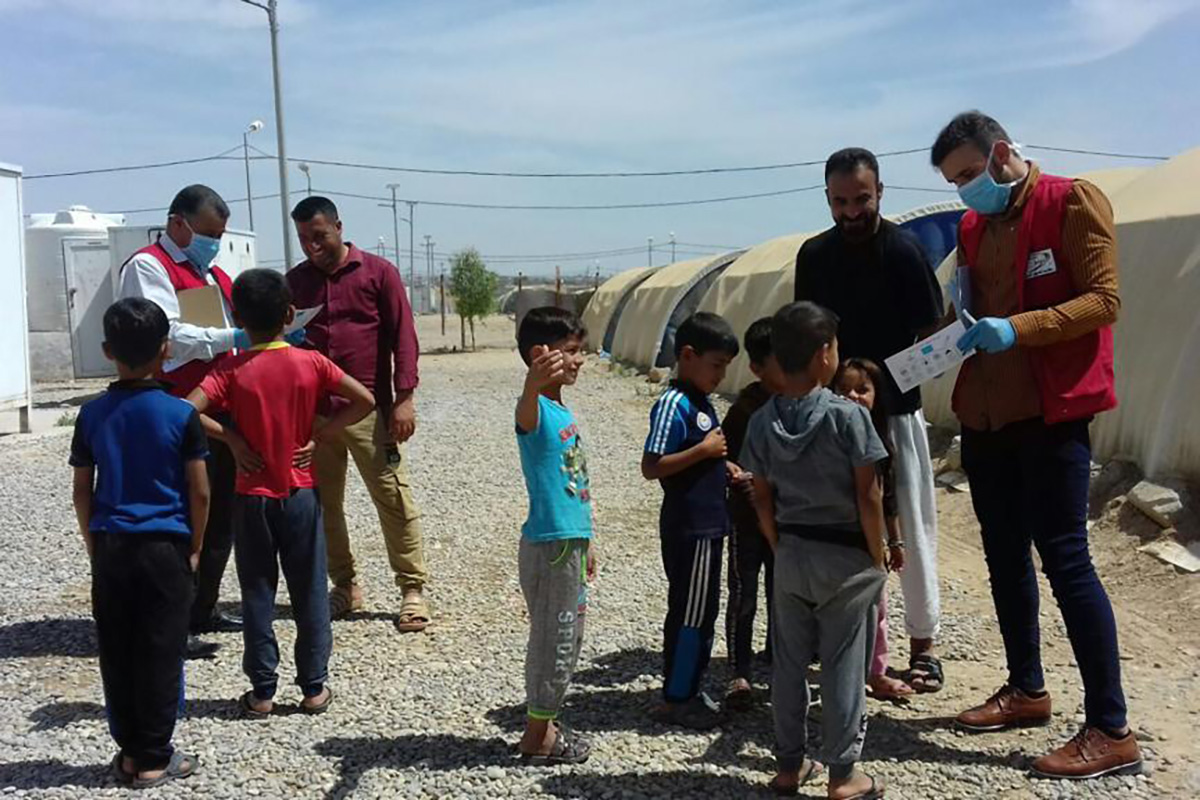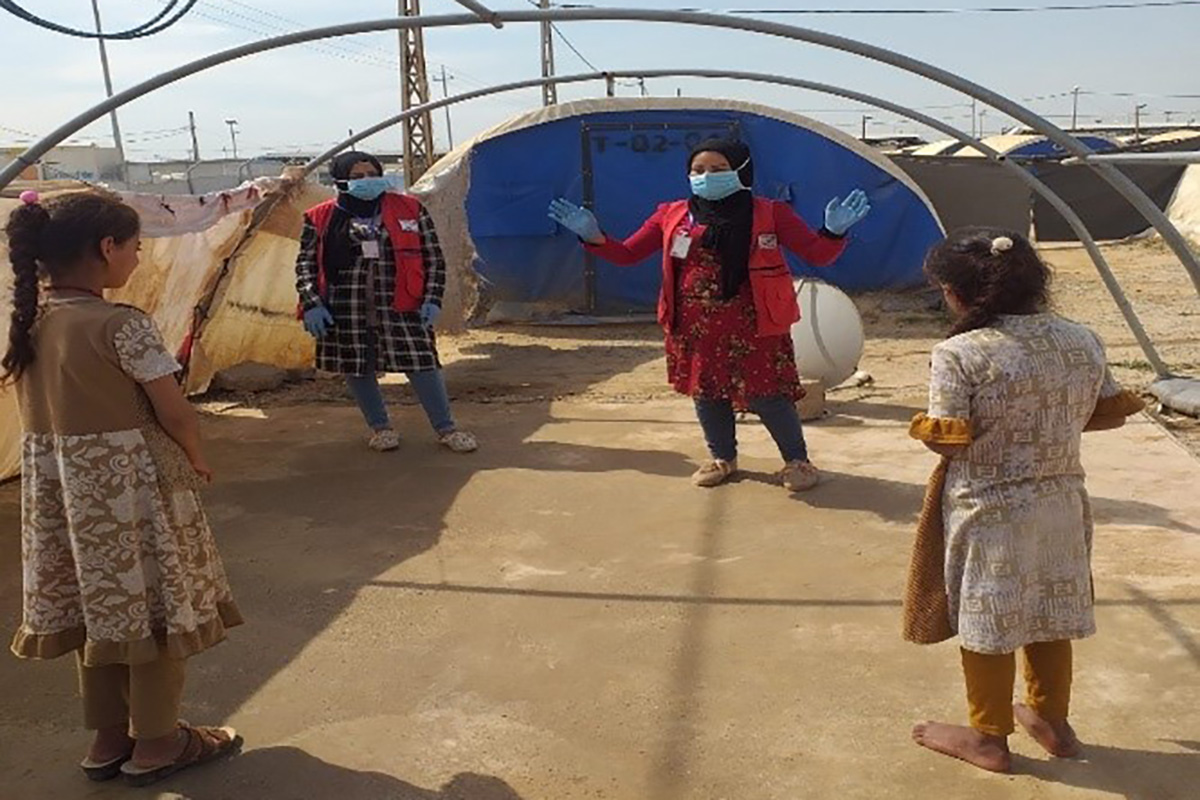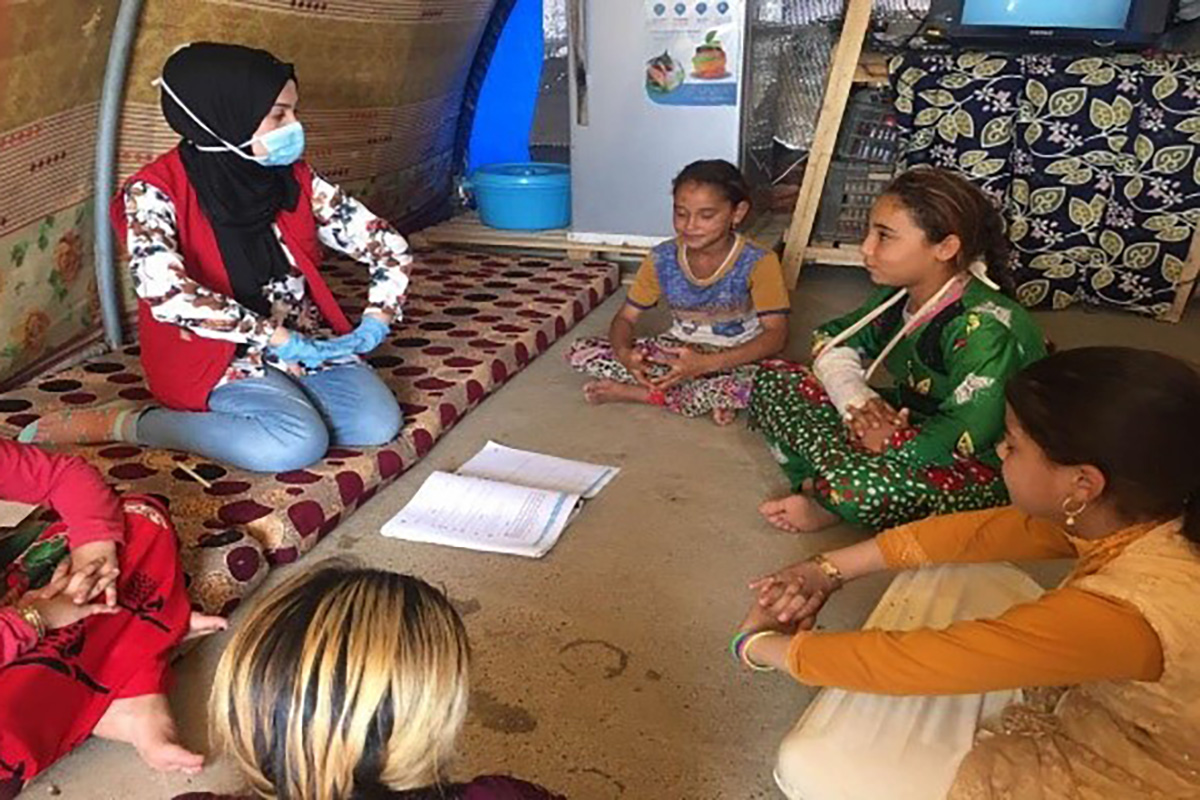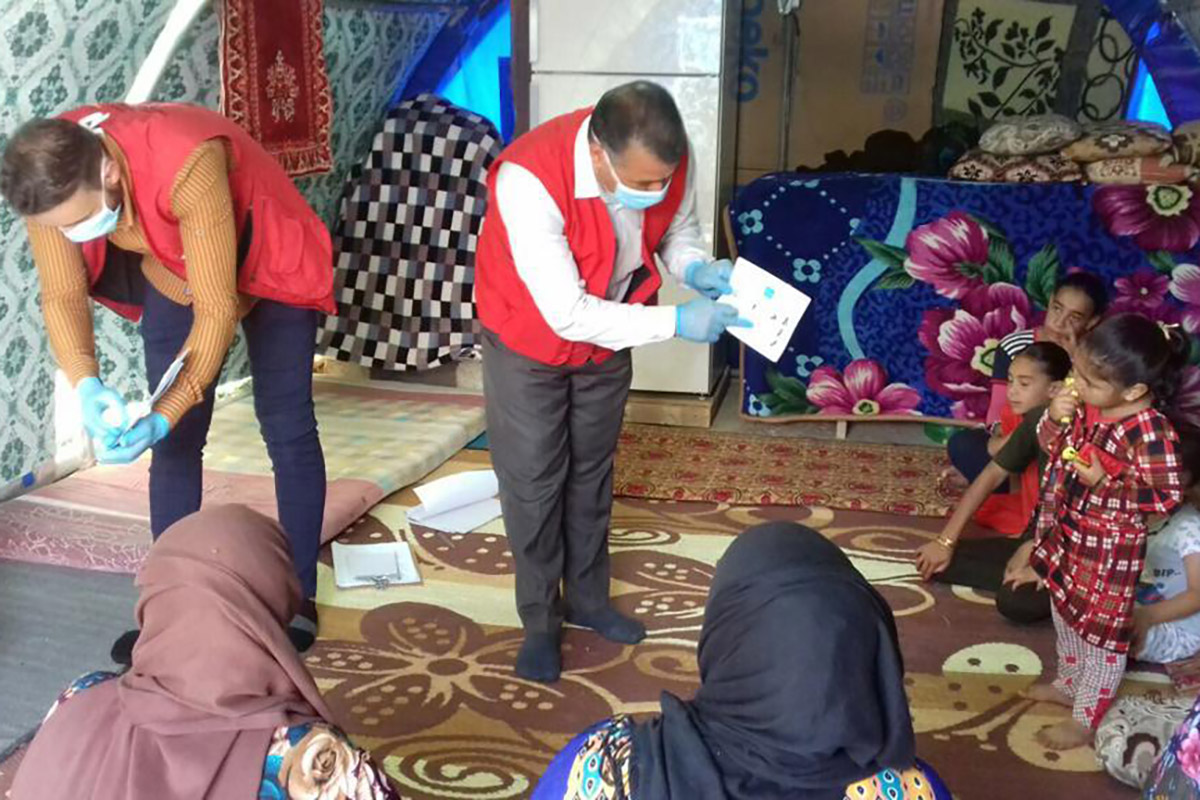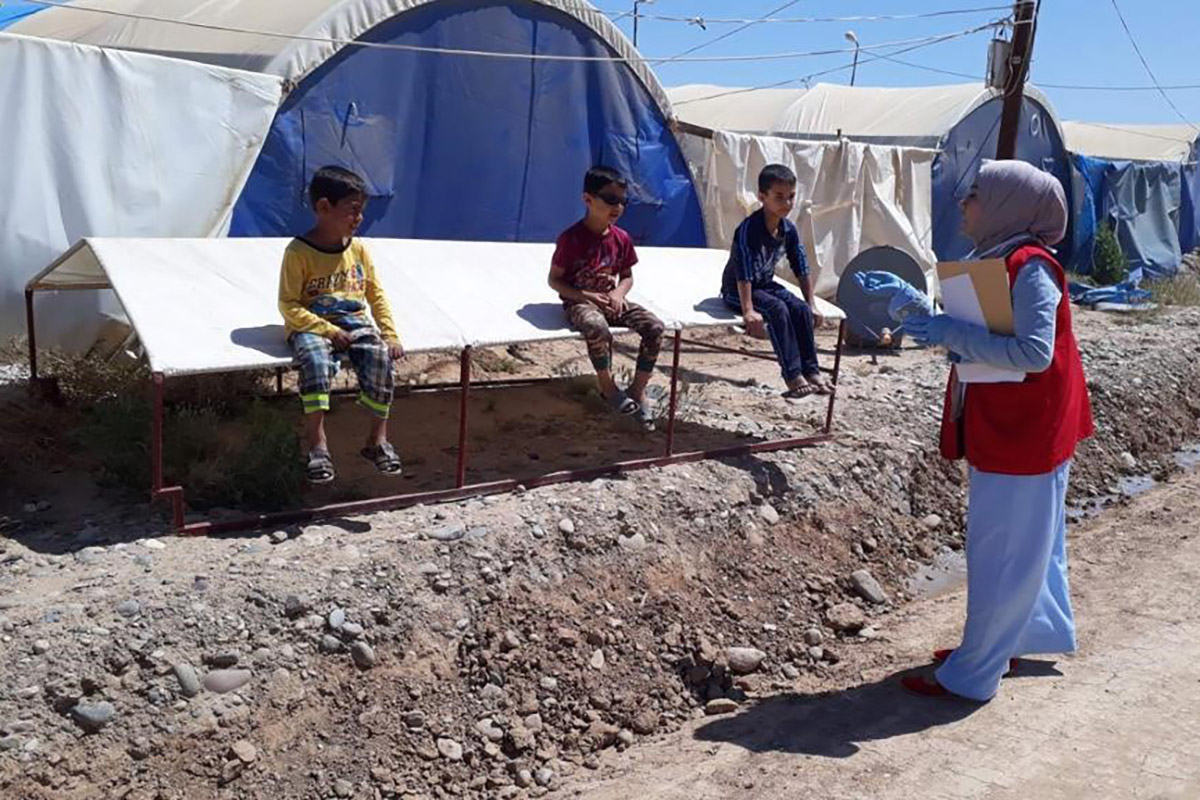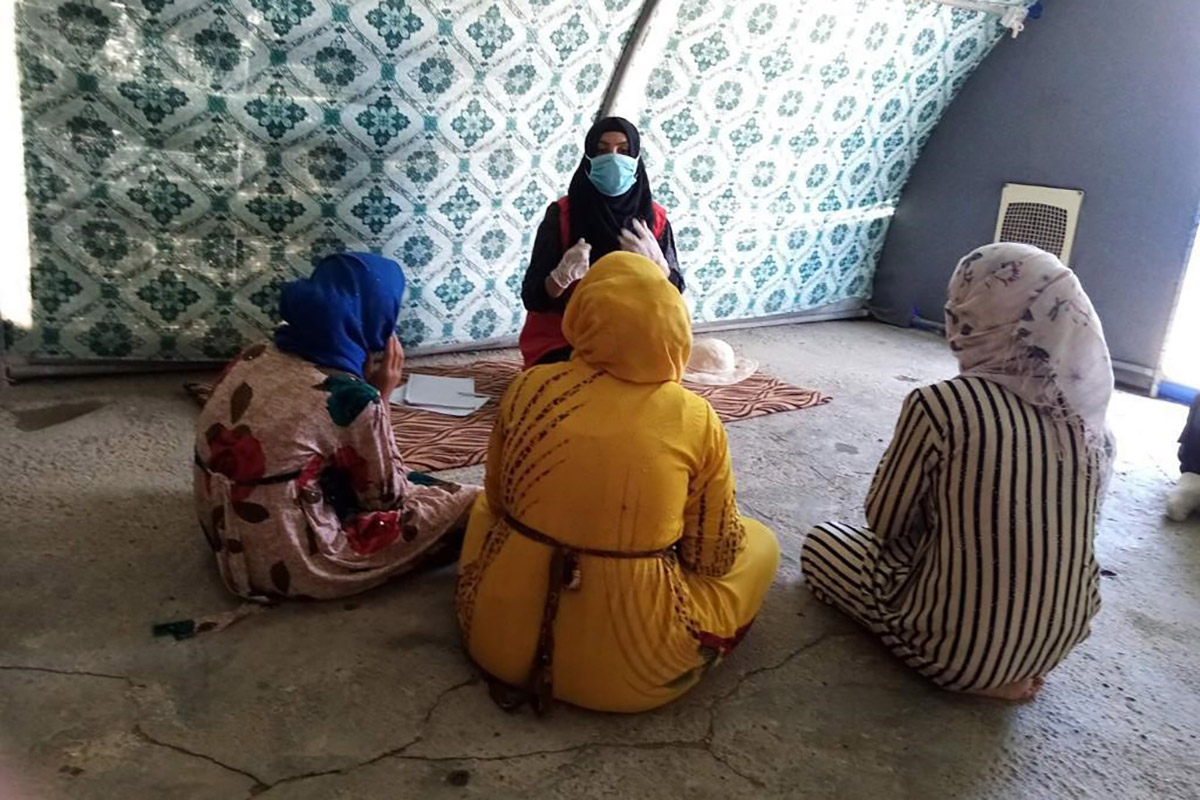COVID-19 EMERGENCY CRISIS #NowMoreThanEver
Support For Women and Girls and Vulnerable Communities is Needed Now More Than Ever
COVID19 has had devastating effects on communities across the Middle East. Support for these communities and those most vulnerable including women and children are needed now more than ever as we continue to witness in IDP and Refugee camps, and urban and rural communities significant disruptions to livelihoods to meet basic needs, serious deterioration in mental health and well-being, and an alarming increase in protection violations including incidents of Gender Based Violence.
Please join us in our fight against these threats to self-resiliency, self-determination, and long-term peace-building caused by the protracted socioeconomic and post-armed conflict crises which have been significantly exacerbated by the COVID19.
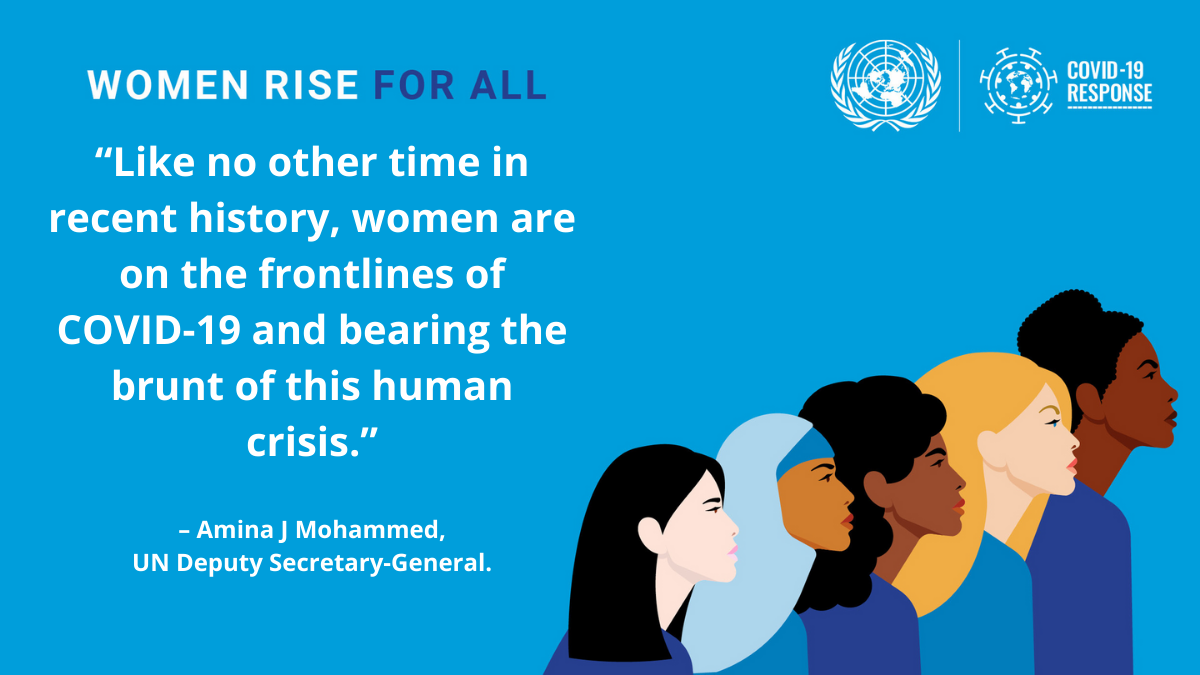

Coronavirus COVID-19
6 Things You Should Know
General symptoms of COVID-19 according to the WHO:
- Fever, tiredness, and dry cough are the most common symptoms
- 1 in 6 people with COVID-19 becomes seriously ill and develops difficulty breathing
- 80% of people recover from COVID-19 without needing special treatment
Emergency warning signs of COVID-19 according to the Centers for Disease Control and Prevention (CDC):
Anyone experiencing any of the following emergency warning signs for COVID-19 should seek medical attention immediately. Emergency warning signs include*:
- Difficulty breathing or shortness of breath
- Persistent pain or pressure in the chest
- New confusion or inability to arouse
- Bluish lips or face
*This list is not all inclusive. Please consult your medical provider for any other symptoms that are severe or concerning.
From the CDC webpage on How COVID-19 Spreads.
The virus is thought to primarily spread person-to-person:
- Between people who are in close contact with one another (within about 6 feet).
- Through respiratory droplets produced when an infected person coughs or sneezes.
Contact with contaminated surfaces or objects may also spread the coronavirus. According to the CDC, “it may be possible that a person can get COVID-19 by touching a surface or object that has the virus on it and then touching their own mouth, nose, or possibly their eyes.”
Anyone can get COVID-19 if exposed to SARS-CoV-2, and anyone can potentially be at risk of serious illness. However, the CDC states on the webpage People at Risk for Serious Illness from COVID-19 that the highest risk groups are elderly adults and people who have other serious health concerns, including those with heart disease, diabetes and lung disease.
According to the CDC: “There is no specific antiviral treatment recommended for COVID-19. People with COVID-19 should receive supportive care to help relieve symptoms. People who think they may have been exposed to COVID-19 should contact their healthcare provider immediately.”
According to the WHO: “While some western, traditional or home remedies may provide comfort and alleviate symptoms of COVID-19, there is no evidence that current medicine can prevent or cure the disease. WHO does not recommend self-medication with any medicines, including antibiotics, as a prevention or cure for COVID-19.”
From the CDC’s What to Do if You Are Sick resource: “There is no specific antiviral treatment recommended for COVID-19. People with COVID-19 should receive supportive care to help relieve symptoms.”
The CDC recommends that people experiencing emergency warning signs seek medical care immediately while following the CDC’s recommendations to help prevent the spread of COVID-19 while sick.
For people who suspect they may have COVID-19, but aren’t sick enough to be hospitalized, the CDC recommends Caring For Yourself at Home following the comprehensive list of recommendations provided, which includes limiting contact with other people to avoiding spreading the disease further.
The CDC’s Steps to Prevent Illness page offers comprehensive information for how people can protect themselves and those around them. These recommendations include information about regular handwashing, cleaning and disinfecting everyday items, social distancing, and who should wear facemasks (primarily caregivers and people who are infected who will be in close contact with others).
The Center for Infectious Disease Research and Policy (CIDRAP) defines social distancing as: “Measures taken to restrict when and where people can gather to stop or slow the spread of infectious diseases. Social distancing measures include limiting large groups of people coming together, closing buildings and canceling events.”
Around the world, many governments, schools and business have implemented social distancing protocols by asking people to study or work from home whenever possible; canceling festivals, meetings, conferences and other gatherings; and encouraging people to limit close contact with others when possible.
COVID-19 and GBV – Alarming Figures
What WRO is Doing for COVID-19 Prevention and Response
- Operation of Women Safe Spaces/CP/Community Centres
- Community Mobilization
- Camp and Non-Camp Mobile Teams
- MHPSS and GBV Trainings for GBV and Non-GBV Actors
- Emergency Fund/Transportation Provision for SGBV survivors
- COVID-19/GBV/CP Case Management and PSS
- COVID-19/GBV Psychological First Aid
- Structured GBV PSS Activities
- Adolescent Girls Programs
- COVID19, Protection/GBV/CP Service Mapping/Pathways
- Legal Support and Counselling Services
- CRM, Protection, and GBV Hotlines
- Safety Audits and GBV Assessments
- Women’s and Community-Based Recreational Activities
- Community Peaceful Coexistence Committees
- COVID19 Awareness Raising
- COVID19 and CP Awareness
- COVID19 and CP Training for Non-CP Actors
- Parenting Skills Programs
- GBV and CP Referral and Case Management
- GBV and CP Non-formal and Structures PSS Activities
- Community Social Cohesion, and Recreational Activities
- Social Cohesion/Peace-Building/Reconciliation Training
- Peer to Peer Mentorship/Support Programs
- Community Mediation/Reconciliation
- Local, Regional, Global Advocacy
COVID-19 Contextual Analysis
According to WHO, Globally, as of March 2022, there have been 452,201,564 confirmed cases of COVID-19, including 6,029,852 deaths, reported to WHO. As of 5 March 2022, a total of 10,704,043,684 vaccine doses have been administered.
As reported in the UN Policy Brief: The Impact of COVID-19 on Women and the Global Humanitarian Response Plan for COVID19 (GHRP COVID19) which was launched in the onset of the global COVID-19 crisis, there has been a dramatic increase in COVID-19 cases in fragile settings, especially those in conflict or hosting refugees, IDPs or returning migrants, and already facing an economic and social crisis before the pandemic as in Iraq/MENA region. Underreporting is also likely due to the lack of widespread testing and in Iraq where negative social stigmas are associated with reaching out for support in the pandemic. The current outbreak of COVID-19 has become a significant protection crisis, especially for women and girls. Confinement, loss of income, isolation and increased psychosocial needs have led to a spike in gender-based violence predominately perpetrated against women and girls. Since the outbreak of the pandemic, UN WOMEN is reporting increased violence against women around the world, with surges of upwards of 25-30 per cent in countries with reporting systems in place, WRO has witnessed the same results through its interventions in Iraq and in some cases as high as 50% increases. As also highlighted in the report, as the virus spreads in countries affected by humanitarian crises with institutional weaknesses on protection, police and justice, it is expected that the vulnerability and risk exposure for women and girls will rapidly increase. At the same time, local gender-based violence services have reduced their capacities or been repurposed to create additional capacity for COVID-19 testing/ treatment and/or alternative support. In an effort to enhance physical distancing and minimize gatherings, key structures such as women safe spaces have also had to drastically reduce the number of clients or disband, creating a huge challenge for women in abusive relationships to seek a safer place to share their problems and receive protection as well as mental health and psychosocial support and information.
According to a UNOPS survey 92% of respondents reported that COVID19 had an impact on their basic needs, 70% reported loss of livelihoods. With families’ loss of livelihoods and potential prolonged family separation due to mobility restrictions, negative coping mechanisms may be adopted, leaving children without care and facing increased exposure to abuse, violence and exploitation, including violence at home, child marriage and child labor. School interruption also causes gaps in childcare, which puts pressures on work and life balance, especially for women, and parents when asked to facilitate the children’s learning at home. Sustained disruption of education could lead to a rise in child labor and child marriage. Women in particular face the economic consequences of the pandemic, as they are overrepresented in the sectors and jobs that are hardest hit, particularly in the most vulnerable types of employment with the least protection, such as self-employed, domestic workers, daily wage workers and contributing family workers. Moreover, increase in calls to UN and WRO’s hotlines indicates that domestic violence against children continues to increase, as well as intimate partner violent, sexual assaults, and harassment. At the same time, movement restrictions are curtailing the ability of social services to respond to threats of abuse and provide protection. Youth, people with disabilities, members of minority groups as well as people deprived of liberty and/ or of the right and access to information are also experiencing a higher degree of protection risks. Younger children and adolescents, especially girls and adolescent mothers, are particularly at risk, as high levels of stress and isolation can impact brain development, sometimes with irreparable long-term consequences. Child and women survivors of serious protection violations may suffer the physical and emotional consequences of compounded traumatic experiences. Mental health is affected by pandemic-induced stress, with concerns with alcohol-related incidents in communities, including domestic violence, and worsening or exacerbation of pre-existing severe mental health, neurological and substance-abuse conditions.
WRO’s Call for Advocacy
Adopted and From UNDPs COVID-19 and GBV Response

Now More Than Ever
And although we are facing the dire consequences of the pandemic, not only in health terms, but in protection and social repercussions, we are deeply inspired by the engagement of those most at risk and survivors in the community and we are very grateful for the support from our partners that allows continue to engage and support as much as possible as again, we cannot emphasize this enough, this is not just a health pandemic, it is a dire protection and social pandemic and support for the community, survivors of GBV and those most at risk is needed now more than ever.
Put Women at the Center of all Preparedness, Response and Recovery Efforts, to Mitigate Disproportionately Negative Impacts on Women and Girls and to Ensure Sustainable Recovery.
Local Community and GBV Survivor Led Approach and Protection and GBV Mainstreamed Throughout Response Including Ensuring Cultural Sensitivities and Gender Dynamics Are Mainstreamed in Multi-Sectorial Response
Inclusion of Women’s Organizations in COVID-19 Planning, Development, Execution, and Monitoring.
Expand Capacities of Safe Spaces and Support for GBV Survivors and Ensure that Individuals Can Safely Prepare to Break Free of Abusive Situations, By Providing Accessible Support, Advice and Reporting Mechanisms.
Ensure Coordination Among UN agencies, Civil Society and Government, Including Women’s Machineries and National Human Rights Commissions, and Disseminate GBV/CP Referral Pathways Regularly and Rapidly
Ensure Inclusiveness To Reach As Many People As Possible, Including Hard-To-Reach, Remote and Vulnerable Groups
Create Referral Booklets Small Enough to be Hidden and Should Include Other non-GBV Services, So as Not to Alert a Potential Perpetrator About the Nature of the Information Supplied.
Collaborate with local CSO’s as Women’s Organizations for Information Dissemination
Provide Additional Funding and Capacity Support to CSOs that Provide Services to Hard-to-Reach Communities or Groups Facing Intersecting Forms of Discrimination.
Integrate GBV Prevention into Women’s Economic Empowerment Initiatives, Including Cash Transfers, Fiscal Relief and Stimulus for Businesses, and Skills Programmes.
Incorporate Sexual Exploitation and Abuse (SEA)/Sexual Harassment (SH)/GBV Screening Into All Recruitment and Procurement Processes
Foster or Develop Women’s Networks Including Women’s CSOs, GBV Survivors’ Organizations, LGTBI Associations, etc. and Engage With Them Throughout Any Intervention.
WHO COVID-19 Advocacy and Resources
This document brings to attention key health and human rights considerations with regards to COVID-19 pandemic. It highlights the importance of integrating a human rights based approach in response to COVID-19. It provides key considerations in relation to addressing stigma and discrimination, prevention of violence against women, support for vulnerable populations; quarantine and restrictive measures and shortages of supplies and equipment. It also highlights human rights obligations with regards to global cooperation to address COVID-19. – Access the publication
This document brings attention to the different ways in which the COVID-19 pandemic and measures to address it, such as staying at home, may exacerbate the risk of domestic violence against women. It highlights the importance of ensuring that support and medical care services for women and children affected by such violence are maintained and what health providers/services can do, including through identifying and offering referral options. It provides recommendations on what measures governments, health providers, community members and others can take to mitigate such violence and its impacts. It also provides tips for coping with stress at home and actions women who are experiencing violence or their family members can take. – Access the publication
This Gender and COVID-19 advocacy brief calls on WHO Member States and all global actors to take into consideration gender in COVID-19 preparedness and response. It highlights the importance of gender analysis and gender-responsive public health policies and measures to curb the epidemic. Taking account of how gender interacts with other areas of inequality, the brief provides key considerations in relation to disaggregated data, violence against women and children, sexual and reproductive health and rights, the health and social workforce, health equity and vulnerable groups, and stigma and discrimination. – Access the publication
Several countries affected by COVID-19, have seen increases in levels of violence occurring in the home, including violence against children, intimate partner violence and violence against older people. Countries also face increasing challenges in maintaining support and care for survivors of violence. This brief compiles key actions that the health sector can undertake within a multisectoral response to prevent or mitigate interpersonal violence based on existing WHO guidance. – Access the publication
To help parents interact constructively with their children during this time of confinement, these six one-page tips for parents cover planning one-on-one time, staying positive, creating a daily routine, avoiding bad behaviour, managing stress, and talking about COVID-19. Use them to your and your kids’ advantage, and have fun in doing so. – For more healthy parenting tips



